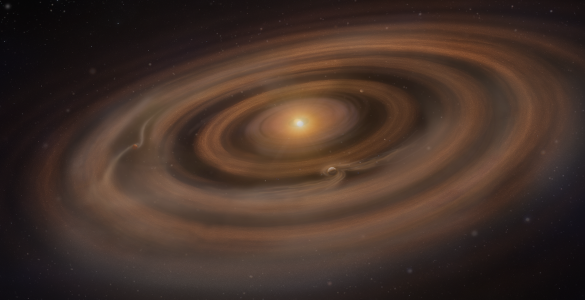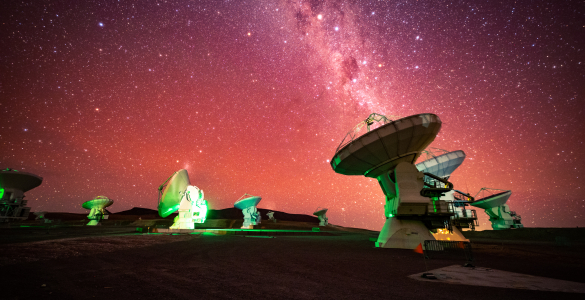Latest NRAO News
News is managed by NRAO News & Public Information. Questions about News? Have a story to share? Want to interview a scientist or create new media about our telescopes?

An international team of astronomers has unveiled groundbreaking findings about the disks of gas and dust surrounding nearby young…

The Atacama Large Millimeter/submillimeter Array (ALMA) has uncovered a key piece of the puzzle in how rocky planets, such…

A team of international astronomers have embarked on an exciting new project to hunt for planets forming around young…

Most stars form in clusters, where hundreds to thousands of stars coevolve in proximal environmental conditions that dictate how…

The ALMA Observatory, in collaboration with its partners, the National Astronomical Observatory of Japan (NAOJ), the European Southern Observatory…

An international team of astronomers has made significant strides in understanding the mysterious jets emanating from supermassive black holes…

Swirling through the Milky Way’s central zone, in the turbulent region surrounding the supermassive black hole at the core…

Astronomers using the Atacama Large Millimeter/submillimeter Array (ALMA), along with complementary data from the Atacama Pathfinder Experiment (APEX), have…

At a distance of just over four light years, Proxima Centauri is our nearest stellar neighbor and is known…

Tucked away in a star-forming region in the Taurus constellation, a pair of circling stars are displaying some unexpected…





